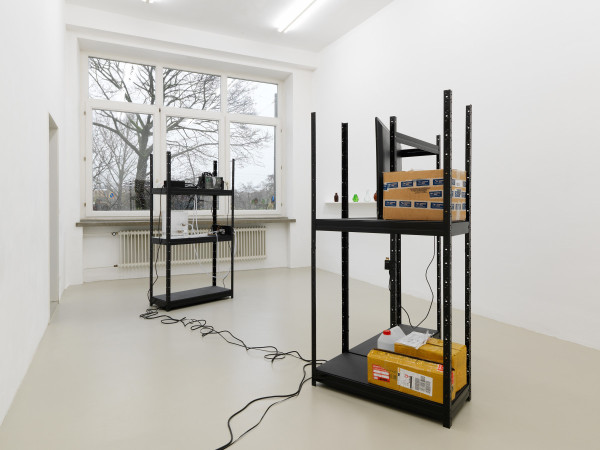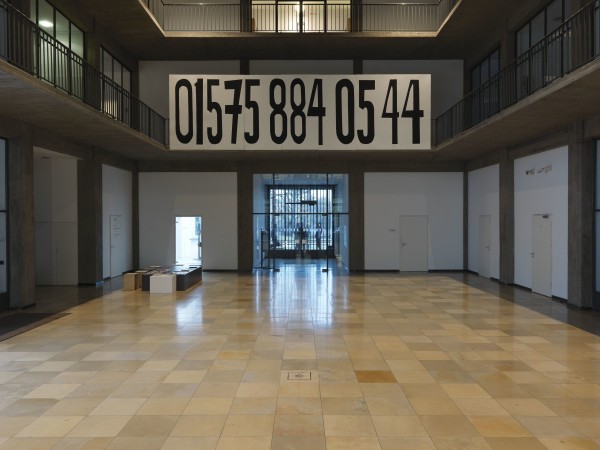TRANSPARENCIES
Tuesday, 22 December 2015
Curators: Simone Neuenschwander and Thomas Thiel
Work by Neïl Beloufa, Juliette Blightman, Ryan Gander, Calla Henkel & Max Pitegoff, David Horvitz, Katja Novitskova, Metahaven, Yuri Pattison
“The ambivalence of a new visibility
The globalized world seems at once transparent and opaque. While modern life is characterized by a desire for more transparency in communication, politics and business, limitless access to information has eroded personal privacy, creating an ever-present, now long-running social dilemma. Despite the generally positive promise of transparency, there have been growing doubts about its impact on the community and on our understanding of the public sphere. A tremendous sense of insecurity can be felt at the level of private messaging, for example: while we value the free exchange of information on the Internet, we simultaneously oppose a surveillance society in which personal data is controlled by algorithms. The digital age brought a fundamental shift to cultural-historical notions of transparency.
„Transparencies“ examines the cultural facets and atmospheres of this (non-)transparency. The two-part, joint exhibition project in Bielefeld and Nuremberg is dedicated to developments in „transparent society,“ and asks how these are reflected in current work by contemporary artists. Participating artists deal with the paradigm of transparency and the ambivalence of the term in multiple, diverse ways. They examine the consequences of an algorithm- and data-collection-driven, life-world transparency and explore our changed relationship to privacy, or convey a critical approach to post-privacy society through strategies of refusal or deliberate disclosure of data. Other key points of investigation include interpersonal exchange and its possible control. Besides these effects of a progressive and media-expanded information age, the works examine the fundamental significance of presence and absence, the potential of revealing and concealing, and the handling of knowledge and ignorance within our society. The artists move between different fields in terms of subject matter, focusing on transparency as it relates to communication, politics, contemporary history, economics, sociology and (marine-)biology.
Simultaneous presentations in Bielefeld and Nuremberg reinforce the experience of transparency within the exhibition. Though all the artists have work in both places, they emphasize different thematic and spatial aspects of their work in the two venues. Both exhibition sites are linked not only in terms of content, but also through various media and artistic contributions. Information and works are deliberately withheld, for example, shown only in part or not even presented in the first place, so that the ambiguity of the exhibition’s topic can be felt at each, respective institution in relation to the other. The two, corresponding presentations not only emphasize their parallelism, but also shed light on the transitions between transparency and opacity, making them palpable for the viewer.
In the run-up to the exhibition, the graphic design studio Metahaven developed its own visual identity for „Transparencies“ with a family of logotypes that references and draws on corporate identities for so-called ‚transparent’ products such as clear varnishes or companies like Volkswagen. Considerations on the topic continue in the form of a symposium, a series of exhibition talks, workshops, and a shared project website. On the one hand, „Transparencies“ attempts to locate and update the phenomenon in cultural history, yet it also enables an understanding of the (borderline) experiences of this new visibility from a contemporary perspective. The project concludes with the publication of a comprehensive catalogue featuring texts by Emmanuel Alloa, Clare Birchall, Simone Neuenschwander, Manfred Schneider and Thomas Thiel.”











